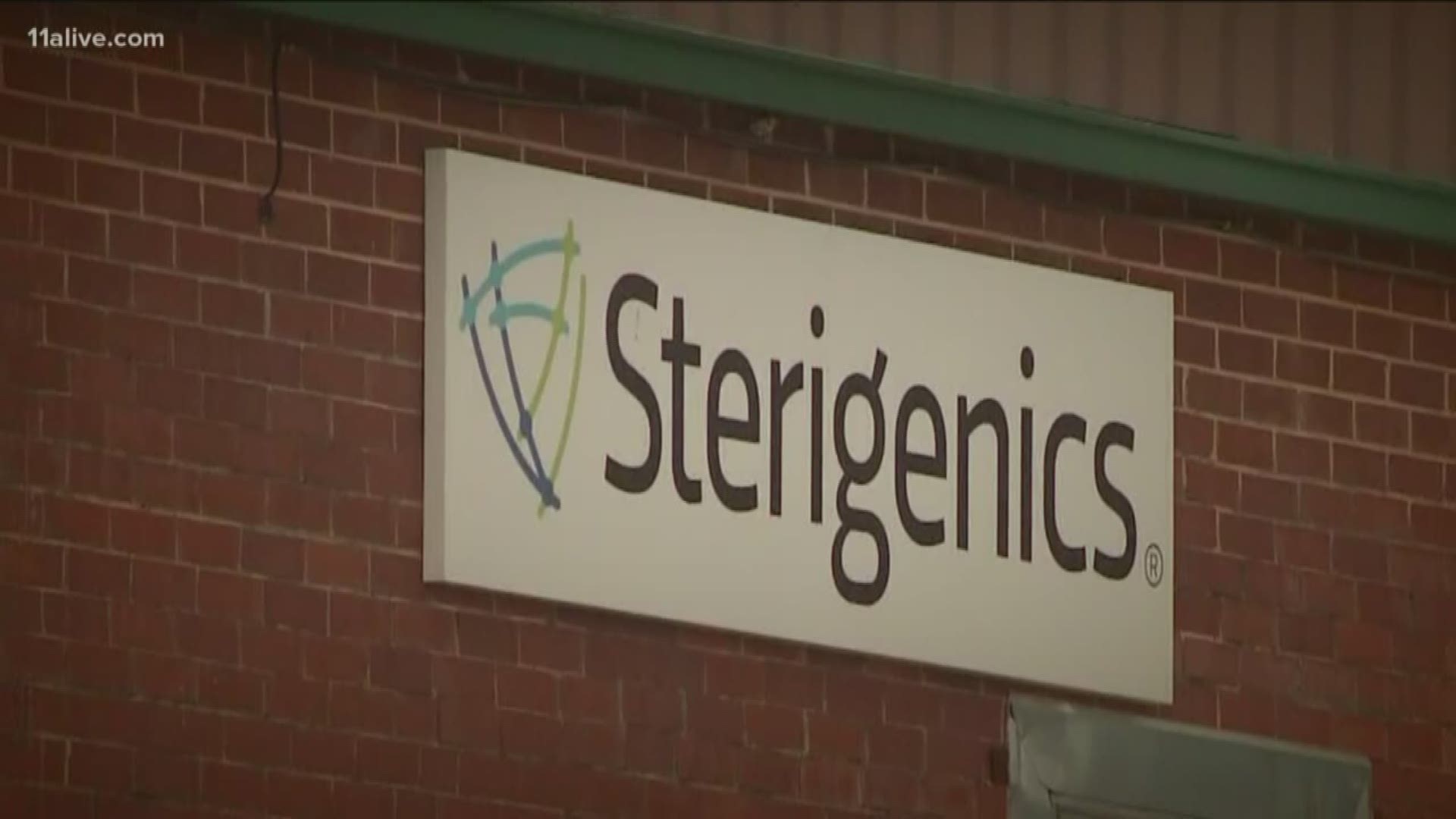ATLANTA — Initial tests by the Georgia Environmental Protection Division show ethylene oxide levels at one Atlanta-area monitoring station exceeding the base level for the “concentration at or below which adverse health effects are not likely to occur.”
Those tests were done more than 20 miles from two Metro Atlanta plants that are known to emit the chemical compound.
Testing, done in June by the EPD, showed a concentration of .309 micrograms per cubic meter of ethylene oxide. The testing was done at EPD's south DeKalb monitoring station.
The station is located near Cedar Grove Middle School in Decatur, about 20 miles from a Sterigenics plant near Smyrna and 30 miles from a Becton Dickinson plant in Covington that have both been a recent cause of concern in those communities.
According to an EPA ethylene oxide fact sheet, California’s EPA has established a “reference exposure level” of .03 milligrams (.309 micrograms is .0309 milligrams) for the chemical.
California based its reference level on nervous system effects in mice, according to the EPA.
“At lifetime exposures increasingly greater than the reference exposure level, the potential for adverse health effects increases,” the EPA fact sheet states.
The plants have been a focus of the two communities since a WebMD article which warned about communities around the country with potentially higher exposure to ethylene oxide emissions.
It referenced a 2014 National Air Toxics Assessment, which showed the areas around facilities in Covington and Smyrna with elevated cancer risk.
Both companies have held meetings with residents and attempted to reassure them that they’re safe. In both cases, the efforts were met with skepticism.
“I am scared to death,” a Covington resident told 11Alive last week. “I’m just wondering now if I need to pack up and move elsewhere.”
Georgia’s Environmental Protection Division has said that the two facilities “are currently emitting significantly less ethylene oxide than assumed” in the 2014 air toxins assessment.
The EPA’s online interactive tool for the 2014 report does not appear to outline specific emissions for ethylene oxide.
The risk has so far focused on cancer, which was measured by Census tracts in cases per one million people.
In the 2014 report, it was elevated to 200 in a million in one Covington tract. That tract, with a population of 8400, could expect an additional 1.68 cancer cases at that rate.
In a handful of Census tracts around Smyrna, the risk was elevated to 90-100 in a million.
A Georgia EPD spokesman confirmed that the .309 micrograms figure is 15 times the number for the EPA’s 100-in-a-million lifetime exposure risk.
Its base risk, 1-in-a-million for a lifetime of continuous exposure, is .0002 micrograms per cubic meter.
There are additional ethylene oxide risks.
The Agency for Toxic Substances & Disease Registry, at the CDC, reports a Minimal Risk Level for inhaling ethylene oxide at .2 milligrams per cubic meter of air. That’s about seven times the recorded level in South DeKalb.
At .2 milligrams, there is an increased risk of kidney damage.
Unlike the EPA cancer assessments, which account for exposure over a very long period of time, the ASTDR’s Minimal Risk Levels account for exposure for a period as short as two weeks to a year, according to the EPA.
Cobb County said this week it will spend $40,000 to test the air around the Smyrna Sterigenics plant, while Covington said it is reviewing companies for an air testing contract.
The Georgia EPD spokesman said the state does not currently test the air around the ethylene oxide-emitting facilities but instead tests their pollution control devices.
“We continue to investigate the feasibility of conducting air monitoring,” a statement said.
The EPA said the levels shown in its test are an estimate "because the calibration criteria used to determine the concentration of ethylene oxide in the sample were not met."

